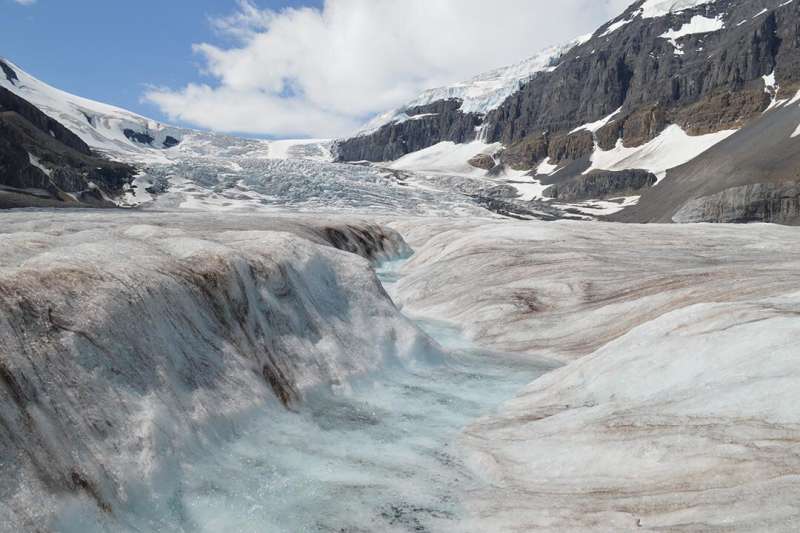Wildfire smoke accelerates glacier melt, affects mountain runoff

As global temperatures rise, wildfires are becoming more common. A new study by University of Saskatchewan (USask) hydrology researchers found that exposure to wildfire smoke can cause glaciers to melt faster, affecting mountain runoff that provides major freshwater resources for life downstream.
"The occurrence and severity of wildfires is increasing. It is linked with climate change and past forest management, and has wide-ranging consequences for human activities and ecology," said Caroline Aubry-Wake, a Ph.D. candidate in USask's College of Arts and Science and co-author of the study alongside supervisor Dr. John Pomeroy (Ph.D.) and fellow Ph.D. candidate Andre Bertoncini. Both Aubry-Wake and Bertoncini are student members of the Global Institute for Water Security.
From 2015–2020, a team of USask hydrology researchers observed each melting season at the Athabasca Glacier, part of the Columbia Icefield in Jasper National Park, Alberta. Based on fire activity that year, they analyzed the accumulation of soot and ash on the glacier and the effects of solar activity that causes glaciers to melt. Study findings were recently published in the American Geophysical Union's journal, Earth's Future.
In years with increased fire activity, wildfire smoke left ash and soot deposits on the glacier ice, causing it to darken and to melt much faster. The surface of the glacier stayed dark even once the fire season had passed, as microbial life likely used the soot as a source of food and reproduced at a faster rate during this time, the report said.
The weather also played a part in the effects on glacier melt. Smoky days are warmer and drier than sunny days and contain less solar energy. On sunny days, the darker ice had a 10 percent increase in its melting rate. Conversely, if smoke was present in the air, the ice was preserved due to the decreased amount of sun reaching the glacier surface.
"It's incredible how we can connect the dots about climate change like this. We see droughts causing fires, fires forming huge plumes of smoke and ash, the ash covering the glaciers, and the glaciers melting at increasing rates because of the fires," said Pomeroy, Canada Research Chair in Water Resources and Climate Change and director of the Centre for Hydrology, study co-author and Aubry-Wake's supervisor.
"These glaciers are our savings account for water for the future and a crucial part of a UNESCO world heritage site landscape in the Rockies, so this is troubling to see," Pomeroy said. "It is useful however to now perceive the interconnections between wildfire and glacier melt and to better understand how climate influences both. This will improve our hydrological modeling of mountain water resources here and around the world."
More information: Caroline Aubry‐Wake et al, Fire and Ice: The Impact of Wildfire‐Affected Albedo and Irradiance on Glacier Melt, Earth's Future (2022). DOI: 10.1029/2022EF002685
Provided by University of Saskatchewan




















